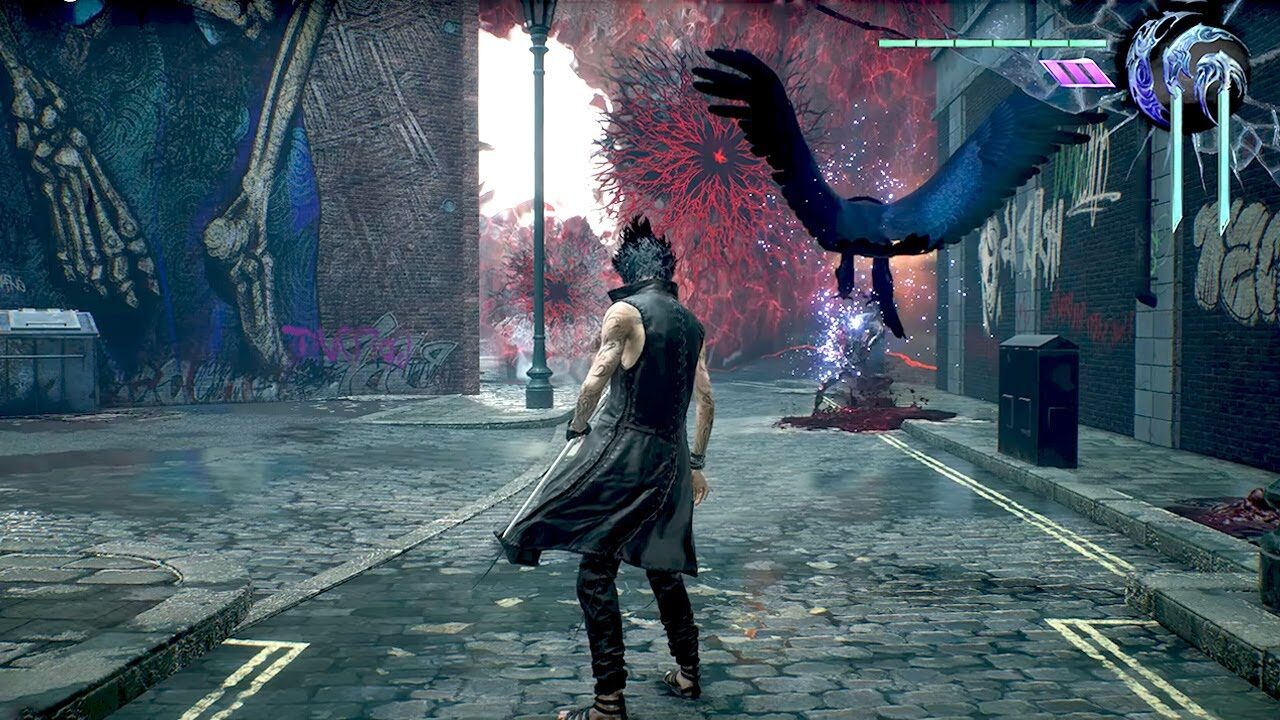The Best Action Games That Embrace Verticality in Combat
In the ever-evolving world of action games, verticality in combat has emerged as a dynamic element that enriches gameplay and offers fresh, exhilarating experiences. Players can now scale towering structures, leap across dizzying chasms, and engage foes from above, transforming the battlefield into a multi-dimensional arena. This article delves into the best action games that masterfully incorporate vertical combat, showcasing titles that not only challenge traditional gameplay mechanics but also push the boundaries of player immersion and strategic depth. Prepare to explore games where the sky is not the limit, but a crucial part of the battlefield.
The Best Action Games That Embrace Verticality in Combat
Titanfall 2: A Masterclass in Wall Running and Jetpack Combat
Titanfall 2 has revolutionized the action game genre with its seamless integration of wall running and jetpack combat. Players can effortlessly traverse vertical landscapes, scaling walls and leaping between buildings with a fluidity that makes combat both unpredictable and exhilarating. The game’s multiplayer maps are meticulously designed to take full advantage of vertical elements, allowing players to outmaneuver opponents and use the environment to their tactical advantage.
Spider-Man: Swinging Through the Skies of New York
Spider-Man, developed by Insomniac Games, offers a unique take on verticality in combat with its web-swinging mechanics. As players navigate the towering skyscrapers of New York City, they can engage in high-flying battles, using Spidey’s agility and web-based attacks to subdue enemies. The fluid movement mechanics make it possible to swing into action from any height, turn the environment into a weapon, and keep combat dynamic and visually stunning.
Dying Light: The Ultimate Parkour Experience
In Dying Light, verticality isn’t just a feature; it’s a necessity for survival. Set in an open-world city overrun by zombies, players must master parkour techniques to navigate rooftops, scale buildings, and avoid ground-based threats. Combat incorporates these parkour elements, allowing players to use the environment creatively to gain the upper hand in fights. The day-night cycle adds another layer of verticality, as climbing to high vantage points can be essential for spotting threats and planning attacks.
Mirror’s Edge Catalyst: Parkour Meets Martial Arts
Mirror’s Edge Catalyst stands out for its innovative blend of parkour and martial arts. Set in a sleek, futuristic city, players take on the role of a free runner who can scale walls, leap across buildings, and use acrobatic moves to dodge bullets and disarm enemies. The emphasis on fluid, uninterrupted movement means that verticality is central to both navigation and combat, creating a gameplay experience that is as graceful as it is intense.
Anthem: Combat in a Vertical World
Anthem, developed by BioWare, introduces verticality through the use of Javelins, exosuits that grant players the ability to fly. This opens up a three-dimensional battlefield where players can launch aerial assaults, dodge enemy fire from above, and explore a richly detailed world. The vertical combat dynamics add a fresh twist to traditional shooter mechanics, encouraging players to think in three dimensions and use the full space around them.
| Game | Main Verticality Feature | Gameplay Impact |
|---|---|---|
| Titanfall 2 | Wall Running and Jetpacks | Increases maneuverability and tactical options |
| Spider-Man | Web-Swinging | Dynamic and fast-paced environmental combat |
| Dying Light | Parkour | Enhanced survival and strategic planning |
| Mirror’s Edge Catalyst | Parkour and Martial Arts | Fluid movement and acrobatic combat |
| Anthem | Flying Javelins | Three-dimensional battlefield dynamics |
FAQs
What makes a game’s combat effectively utilize verticality?
Effectively utilizing verticality in combat requires a blend of cleverly designed environments and mechanics that encourage players to take advantage of different heights, platforms, and angles. Level design plays a crucial role, incorporating multi-tiered arenas, climbable structures, and elevated vantage points that can be accessed seamlessly during combat. Mobility mechanics such as double jumps, grappling hooks, and wall-running give players the tools they need to navigate these vertical spaces dynamically. Additionally, the inclusion of enemies that also use verticality ensures that combat remains challenging and engaging. When done right, vertical combat adds a layer of strategic depth, as players must consider not just their position relative to their enemies on a horizontal plane, but also the vertical dimension.
Why is verticality important in action games?
Verticality adds an additional layer of complexity and excitement to action games by enhancing the dimensionality of combat encounters. It forces players to think in three dimensions, make tactical decisions based on height, and utilize the environment to their advantage. Verticality can also create more dynamic and varied gameplay experiences, breaking the monotony of flat, linear stages. When combat is spread across multiple levels, it can turn straightforward fights into multi-faceted battles, where positioning and movement are just as important as shooting or slashing. This not only keeps players engaged but also showcases the game’s design ingenuity, making each encounter feel fresh and exhilarating.
What are some examples of action games that excel in vertical combat?
Several action games are renowned for their exceptional use of verticality in combat. Titanfall 2 is often cited for its masterful integration of parkour and giant mechs, allowing players to easily traverse walls and leap across rooftops while engaging in high-octane gunfights. Doom Eternal takes the verticality concept to heart, with its diverse arsenal of movement options including double jumps, dashes, and grappling hooks, all of which are essential for surviving its fast-paced battles. Another notable example is Sekiro: Shadows Die Twice, where vertical exploration and combat combine through the use of a grappling hook, providing both strategic advantages and escape routes in the heat of battle. Each of these games incorporates verticality in a way that is not just a gimmick, but a core element of their combat mechanics.
How can vertical combat enhance the replayability of an action game?
Vertical combat can significantly enhance an action game’s replayability by offering multiple pathways and strategies for overcoming challenges. As players become more familiar with a game’s mechanics and level layouts, they can experiment with different approaches, such as finding new vantage points for sniping, discovering hidden routes for ambushes, or mastering advanced movement techniques to outmaneuver enemies. This encourages repeated playthroughs, as each run can present new tactical opportunities and hidden secrets that weren’t apparent initially. Furthermore, games that embrace verticality often support community-driven content, such as speedruns or custom challenges, where players can showcase their skills in navigating complex, multi-layered environments. The added depth and variety provided by vertical combat give players a strong incentive to return, ensuring the game remains enjoyable long after the initial playthrough.




























Post Comment